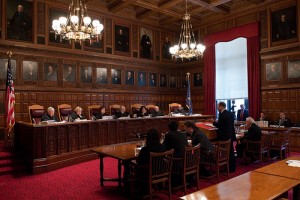Posted
25 Sep 2013 in IMLA Briefs
When is it appropriate for a federal court to decide a case that is pending in state court?

On the Supreme Court’s docket is a case that addresses this very issue, giving the Court the chance to once again ponder the limits of the
Younger abstention doctrine.
That case, on appeal from the Eighth Circuit, is
Sprint Communs. Co., L.P. v. Jacobs, Case No. 12-815.
At issue is whether
Younger abstention applies only when the underlying state proceeding is “coercive” or whether it is sometimes appropriate for federal courts to abstain from hearing cases that are “remedial” in nature. Many cases dealing with
Younger abstention have turned on that distinction. But the difference between “coercive” and “remedial” proceedings, and the way courts classify cases as one or the other, is anything but clear-cut. Indeed, the distinction could turn on whether the government or a private party initiated the action, as “coercive” proceedings are typically described as those that are criminal or quasi-criminal in nature.





